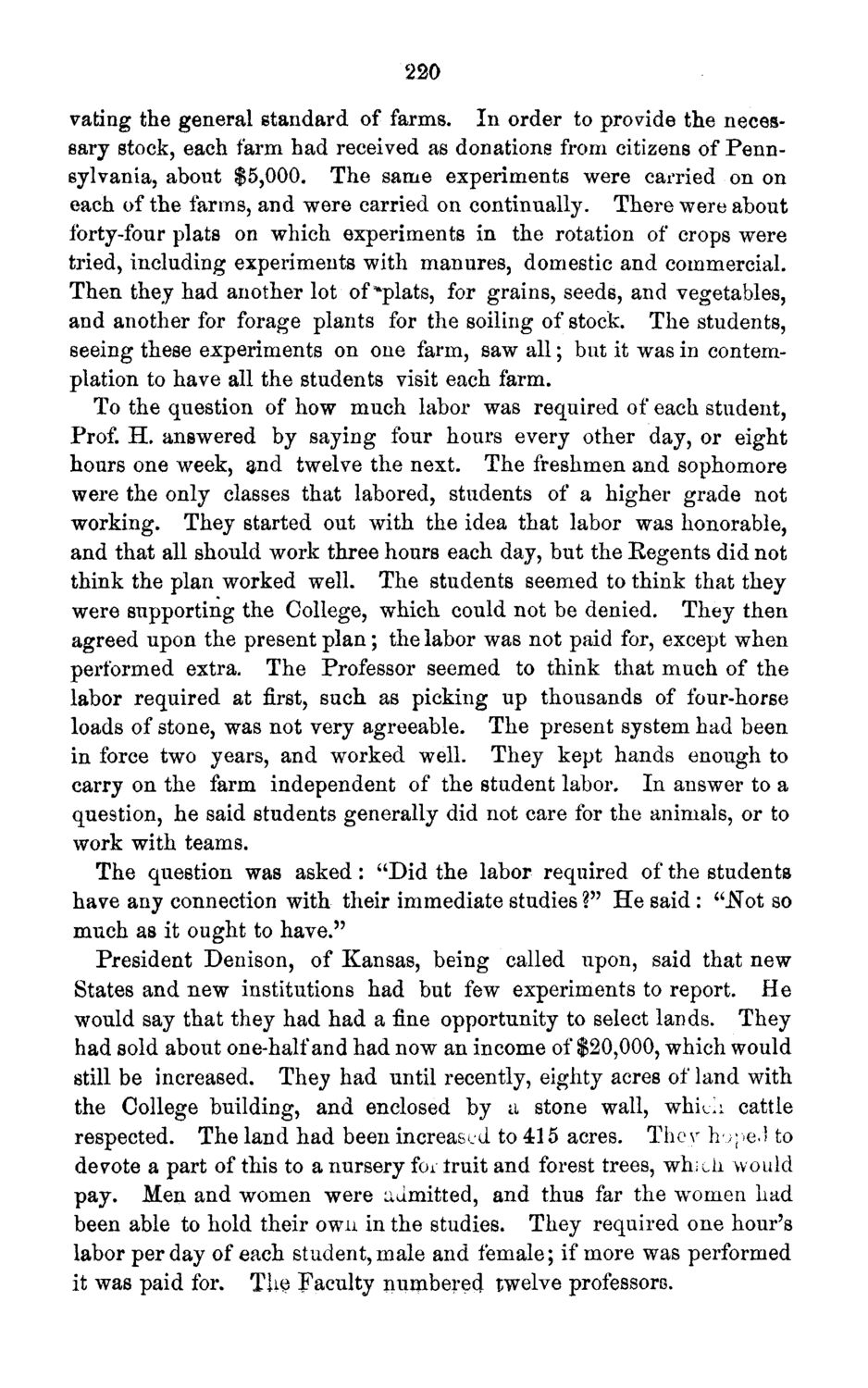| |
| |
Caption: Board of Trustees Minutes - 1871
This is a reduced-resolution page image for fast online browsing.

EXTRACTED TEXT FROM PAGE:
220 vating the general standard of farms. In order to provide the necessary stock, each farm had received as donations from citizens of Pennsylvania, about $5,000. The same experiments were carried on on each of the farms, and were carried on continually. There were about forty-four plats on which experiments in the rotation of crops were tried, including experiments with manures, domestic and commercial. Then they had another lot of *plats, for grains, seeds, and vegetables, and another for forage plants for the soiling of stock. The students, seeing these experiments on one farm, saw all; but it was in contemplation to have all the students visit each farm. To the question of how much labor was required of each student, Prof. H. answered by saying four hours every other day, or eight hours one week, and twelve the next. The freshmen and sophomore were the only classes that labored, students of a higher grade not working. They started out with the idea that labor was honorable, and that all should work three hours each day, but the Regents did not think the plan worked well. The students seemed to think that they were supporting the College, which could not be denied. They then agreed upon the present plan; the labor was not paid for, except when performed extra. The Professor seemed to think that much of the labor required at first, such as picking up thousands of four-horse loads of stone, was not very agreeable. The present system had been in force two years, and worked well. They kept hands enough to carry on the farm independent of the student labor. In answer to a question, he said students generally did not care for the animals, or to work with teams. The question was asked: "Did the labor required of the students have any connection with their immediate studies ?" He said: "Not so much as it ought to have." President Denison, of Kansas, being called upon, said that new States and new institutions had but few experiments to report. He would say that they had had a fine opportunity to select lands. They had sold about one-half and had now an income of $20,000, which would still be increased. They had until recently, eighty acres of land with the College building, and enclosed by a stone wall, whk-ii cattle respected. The land had been increased to 415 acres. They h;peJ to devote a part of this to a nursery for truit and forest trees, which would pay. Men and women were admitted, and thus far the wTomen had been able to hold their own in the studies. They required one hour's labor per day of each student, male and female; if more was performed it was paid for. Th§ Faculty numbered twelve professors.
| |